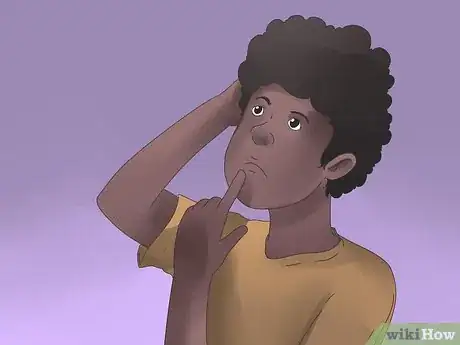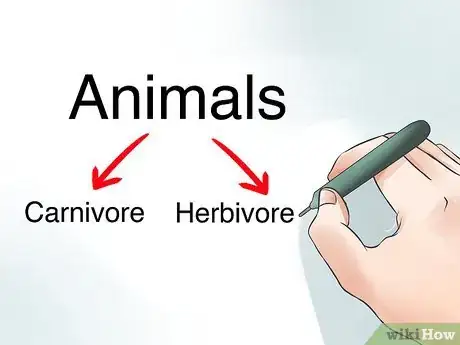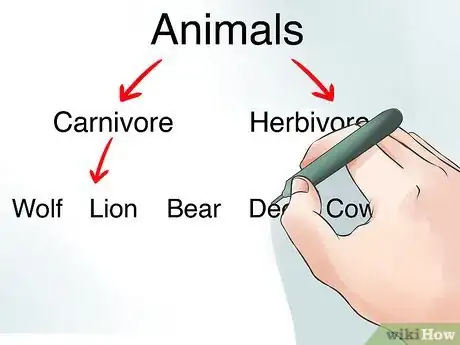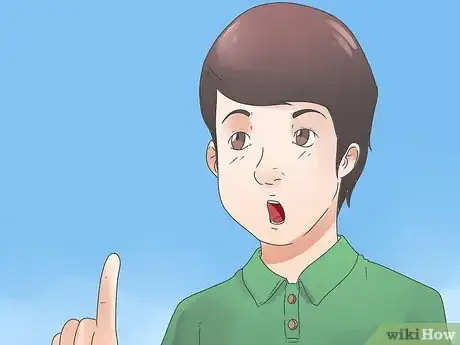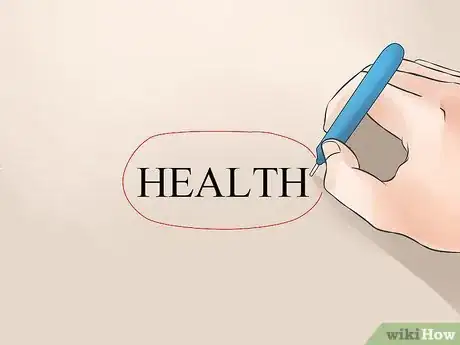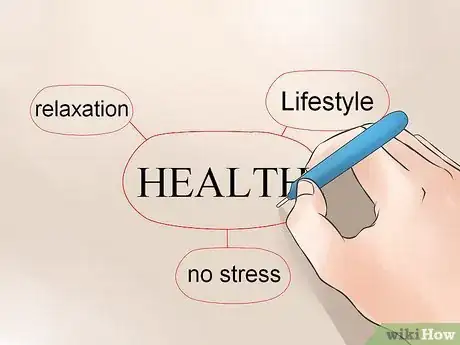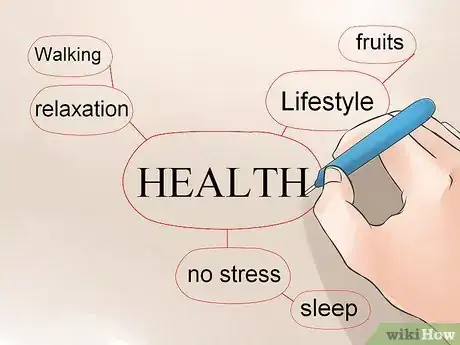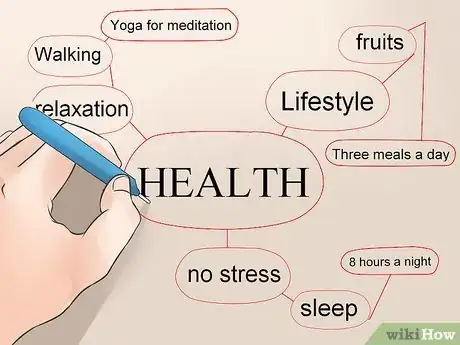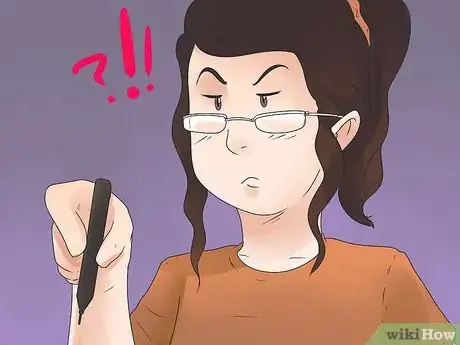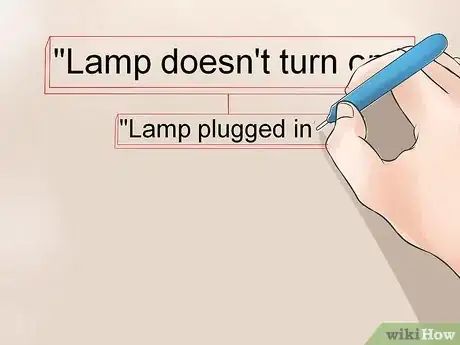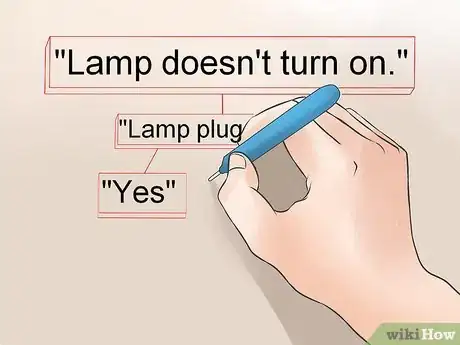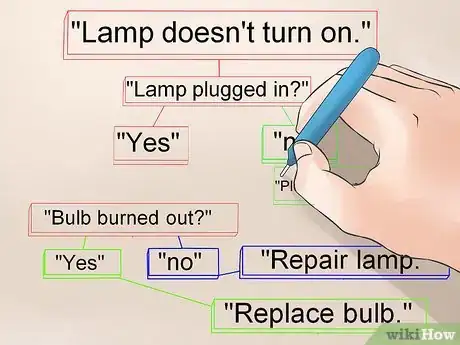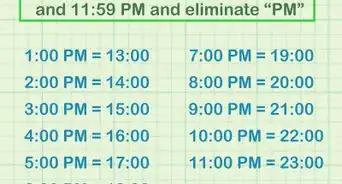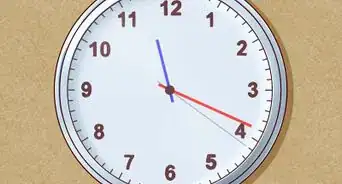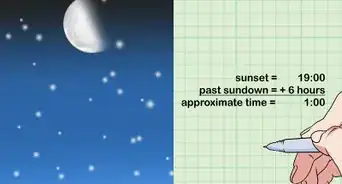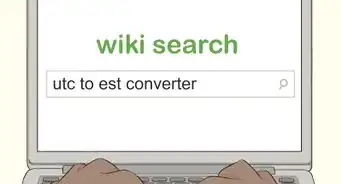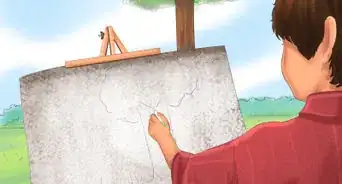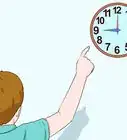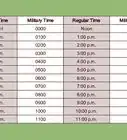wikiHow is a “wiki,” similar to Wikipedia, which means that many of our articles are co-written by multiple authors. To create this article, 25 people, some anonymous, worked to edit and improve it over time.
There are 11 references cited in this article, which can be found at the bottom of the page.
This article has been viewed 217,947 times.
Learn more...
A concept map can help you organize your thoughts and brainstorm stellar ideas for any creative project. Concept maps are also perfect as a study aid for visual learners, as they allow you to see how a variety of topics and processes are connected. Concept maps are typically made by placing a word in a box or oval and using arrows or lines to link it to other words, showing the relationship between these subjects. The most common concept maps are the hierarchy concept map, the spider concept map, and the flow chart concept map.
Steps
The Hierarchy Concept Map
-
1Brainstorm a list of important topics. Before you choose the subject at the top of your hierarchy map, you should write down a list of important subjects related to your project or assignment. If you know that your project should be about trees, for example, then that word would go at the top of your concept map. But if you just know that you have to write or think about objects in nature, or materials made from nature, then your task is a bit harder.[1] First, write out all of the concepts related to your general subject:
- Trees
- Oxygen
- Wood
- Humans
- Plants
- Animals
- Houses
- Paper
-
2Choose the most important concept. Once you've brainstormed a list of concepts related to your project, you can choose the concept that is most essential to all of the others -- the one from which all of the others stem. This may be obvious, or it may require a little thought. Remember, if it's a hierarchical map, then the central word should be the one that connects all of the others. In this case, the word is "Trees".[2]
- This word will appear in a box or oval at the top of your map.
- Note that in some cases, you can skip the first step. If you already know that you have to write a paper or give a presentation on "Trees," for example, you can write that word at the top of the hierarchical map right away.
Advertisement -
3Link the key word to the second most important words from your list. Once you've found your keys word, draw arrows extending downward to the left and right that connect the word to the next two or three most important words. These next words should be able to connect to the other words you've brainstormed, which will appear below them. In this case, the hierarchical term is "Trees," and it will be linked to the two next most important terms, "Oxygen" and "Wood".[3]
-
4Link the second key words to less important words. Now that you've found your key word and the next most important words, you can write the words that relate to the second key words below these. These terms will become more specific, and should relate back to the words above them, "Oxygen" and "Wood," as well as the most central word, "Trees." Here are the terms that you'll list below these more central terms:[4]
- Humans
- Plants
- Animals
- Houses
- Paper
- Furniture
-
5Explain the relationship between the terms. Add lines to connect the terms, and explain the relationship between the terms in a word or two. The relationships can vary; one concept can be part of another, it can be crucial to another concept, it can be used to produce another concept, or there can be a variety of other relationships. Here are the relationships between the concepts on this map:[5]
- Trees give oxygen and wood
- Oxygen is important to humans, plants, and animals
- Wood is used to make houses, paper, furniture
The Spider Concept Map
-
1Write the main topic in the center. The spider concept map is organized with a main topic in the center, sub-topics branching from the main topic, and supporting details branching off the sub-topics. This format will actually make the map resemble a spider. This type of map is also ideal for writing an essay, because it can help you generate supporting evidence and understand the primary and secondary details of the subject.[6]
- The spider concept map is also very useful for helping you see which topics are richer than others, because you'll see that you can "branch off" more concepts from larger topics.
- Let's say the main topic is "Health." Write this topic in the center of a piece of paper and circle it. This circle should be larger and more prominent than the others to emphasize that this is the most important topic.
-
2Write the subtopics around the main topic. Now that you've written your main topic, you can write down the subtopics around it. You can write them in smaller circles and connect the circles to the main topic, "Health." You can first brainstorm a list of subtopics before you choose a few of them -- let's say three. These subtopics should be large enough for you to write at least three supporting details about each of them.[7]
- Let's say you've brainstormed the following concepts related to health: lifestyle, relaxation, no stress, sleep, healthy relationships, happiness, diet, fruits and vegetables, exercise, avocado, massage, walking, running, stretching, bike riding, three balanced meals, and proteins.
- Pick the three most important subtopics, which can encompass many of these terms and are broad enough to incorporate a number of concepts. From this list, the most productive terms are: exercise, lifestyle, and diet. Write these terms in circles around the main topic and connect them with lines. They should be somewhat evenly spaced around the central topic, "Health."
-
3Write the supporting topics around their the subtopics. Now that you've chosen three supporting topics, you can write the supporting topics around them. Just do the same thing you did in the last step: brainstorm a list of supporting topics around the subtopics. Once you've chosen your supporting topics, you can just connect them with the subtopics with a line or even draw a circle around them to connect them. They should appear smaller than the subtopics.[8]
- Around the subtopic "exercise," you can write the following terms: walking, yoga, variety, how often, how much, and biking instead of driving.
- Around the subtopic "lifestyle," you can write the following terms: sleep, healthy relationships, relaxation, massage, routine, variety, and love.
- Around the subtopic "diet," you can write the following terms: fruits, vegetables, proteins, balance, carbs, and hydration.
-
4Keep going (optional). If you'd like to make your spider concept map really specific, then you could even take it a step further and write some supporting topics around the supporting topics. This can be useful if you're dissecting a particularly difficult topic that has many layers. It also depends on how long your paper, assignment, or project should be -- if it requires more words or time, then you can expand your concept map a bit.
- Around the supporting topic "sleep," you can write, "8 hours a night," "don't drink caffeine before bed," and "the same amount every night"
- Around the supporting topic "yoga," you can write "yoga for meditation," "power yoga," or "vinyasa yoga".
- Around the supporting topic "balance," you can write "three meals a day," "protein with every meal" and "healthy snacks".
The Flowchart Concept Map
-
1Choose your starting point or problem. The flowchart map allows you to examine a process and see the multiple options for getting it done. The flowchart can be linear and can just flow from one concept to the next, but it can also have multiple elements for examining a variety of outcomes. The starting point can be a process or a problem that needs a solution. Let's use the starting point, "Lamp doesn't turn on".[9]
-
2Write the easiest solution for the problem. For the problem, "Lamp doesn't turn on," the most typical solution is that the lamp is not plugged in. Just write, "Lamp plugged in?" and connect it with an arrow to "Lamp doesn't turn on".[10]
-
3Write the two results for this solution. Write a line from "Lamp plugged in?" that says "no" and another that says "yes." If you follow the line that says "no", then the response would be "Plug in lamp". Connect this response to "no" with a line. You've completed one flow of the concept, starting with "Lamp doesn't turn on" to "Plug in lamp". If you follow this "flow," then it should solve the problem.[11]
- But if the lamp is plugged in, you'll follow "yes" to another option: "Bulb burned out?" This is the next logical solution.
-
4Write the results for the next solution. From the question, "Bulb burned out?" you'll need to branch out two terms: "yes" and "no" If the answer to "Bulb burned out" is "yes," then you'll need to connect this word to the solution, "Replace bulb", You've completed another flow of the concept, because this should fix the broken lamp. But if it turns out that the bulb is not burned out, you'll have to follow "no" to the last option: "Repair lamp".[12]
- You have now completed a flowchart for the problem of a broken lamp, which will lead you to one of three solutions: plugging it in, replacing the bulb, or repairing the lamp.
Community Q&A
-
QuestionWhat does hierarchy mean?
 Bryan RudinCommunity AnswerHierarchy is the ranking of things in order of their importance.
Bryan RudinCommunity AnswerHierarchy is the ranking of things in order of their importance. -
QuestionAnd what's the difference between mind mapping and concept mapping?
 Community AnswerMind maps are a brainstorming strategy that are free-flowing. There is no hierarchy and it is mostly recall, a lower level in Blooms Taxonomy. Concept maps have a key component - concept and idea linking words called "cross links." It is the use and function of cross links to to describe the connections between concepts and disciplines, thus leading to more critical thought and a deeper understanding for student and teacher. The concept maps shown here on wikiHow have no cross links, so this is a poor representation of the strategy.
Community AnswerMind maps are a brainstorming strategy that are free-flowing. There is no hierarchy and it is mostly recall, a lower level in Blooms Taxonomy. Concept maps have a key component - concept and idea linking words called "cross links." It is the use and function of cross links to to describe the connections between concepts and disciplines, thus leading to more critical thought and a deeper understanding for student and teacher. The concept maps shown here on wikiHow have no cross links, so this is a poor representation of the strategy. -
QuestionHow does concept mapping help the teachers?
 ZacCommunity AnswerConcept mapping is a great way to express different ideas that one may have, because it allows the person mapping to compare and contrast the ideas visually. They are also really great when one may want to link one key idea to another. So for a teacher, concept mapping may be beneficial in expressing a point or idea in a lesson or in planning a lesson. The visual ideas featured can be compared, contrasted, and linked, which will allow the teacher to pinpoint or create and utilize the best idea.
ZacCommunity AnswerConcept mapping is a great way to express different ideas that one may have, because it allows the person mapping to compare and contrast the ideas visually. They are also really great when one may want to link one key idea to another. So for a teacher, concept mapping may be beneficial in expressing a point or idea in a lesson or in planning a lesson. The visual ideas featured can be compared, contrasted, and linked, which will allow the teacher to pinpoint or create and utilize the best idea.
References
- ↑ https://ecrp.illinois.edu/v8n2/birbili.html
- ↑ https://msu.edu/~luckie/ctools/
- ↑ https://creately.com/blog/diagrams/ultimate-concept-map-tutorial/
- ↑ http://cmap.ihmc.us/docs/constructingaconceptmap.php
- ↑ https://www.youtube.com/watch?v=8XGQGhli0I0
- ↑ http://www.enchantedlearning.com/graphicorganizers/spider/
- ↑ https://www.youtube.com/watch?v=CGTu3o3EE7s
- ↑ https://www.the-organic-mind.com/spider-diagrams.html
- ↑ http://www.edrawsoft.com/create-process-flowchart.php
About This Article
To make a concept map, start by writing an important concept related to the project you're working on in a box or oval at the top of a piece of paper. Then, draw 2 or 3 arrows extending down off the first concept, and write a concept related to the main one underneath each arrow. For example, if your main concept was "Trees," the two concepts below that could be "Leaves" and "Wood." Finally, continue to branch off from each concept, and look for ways that the different concepts are related to each other. To learn how to make a spider concept map, scroll down!
